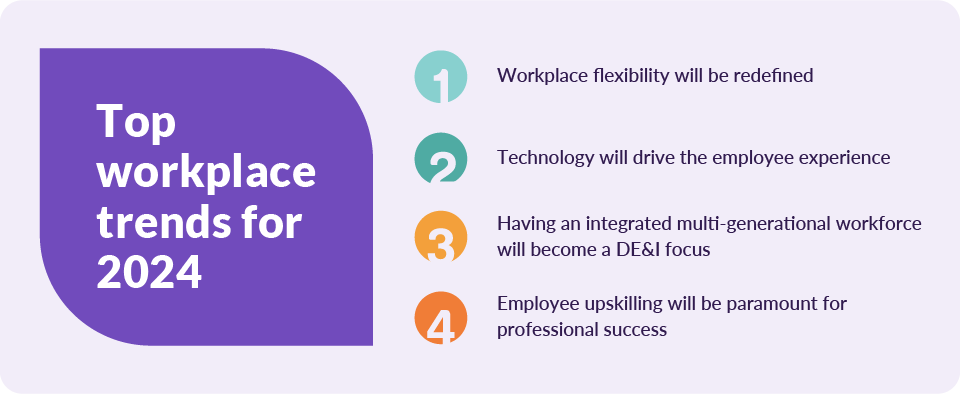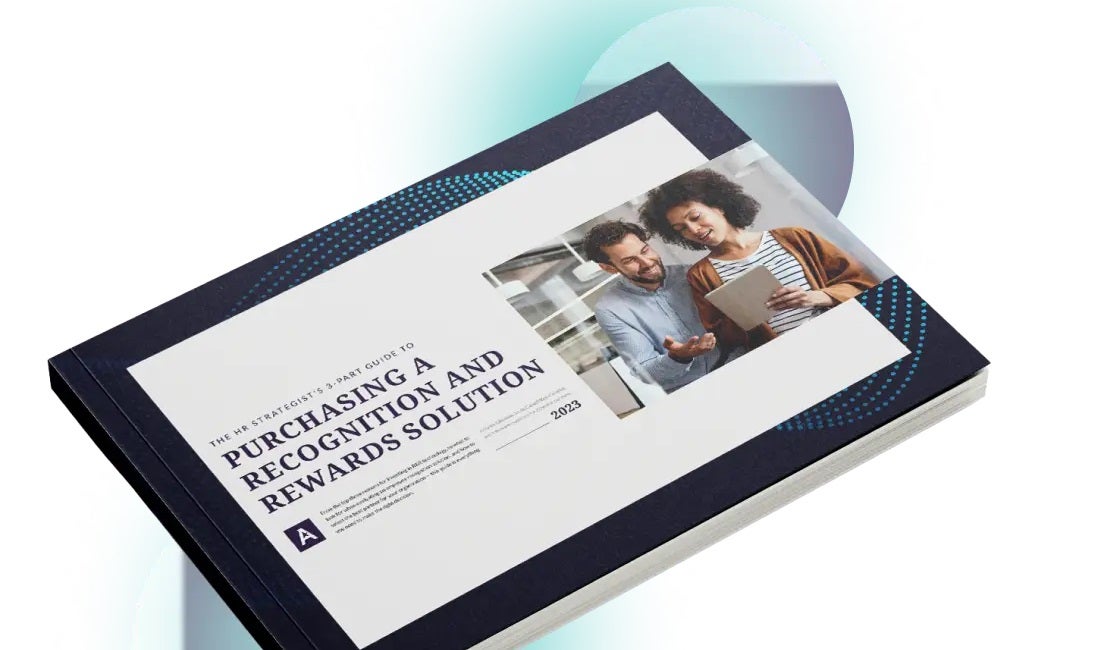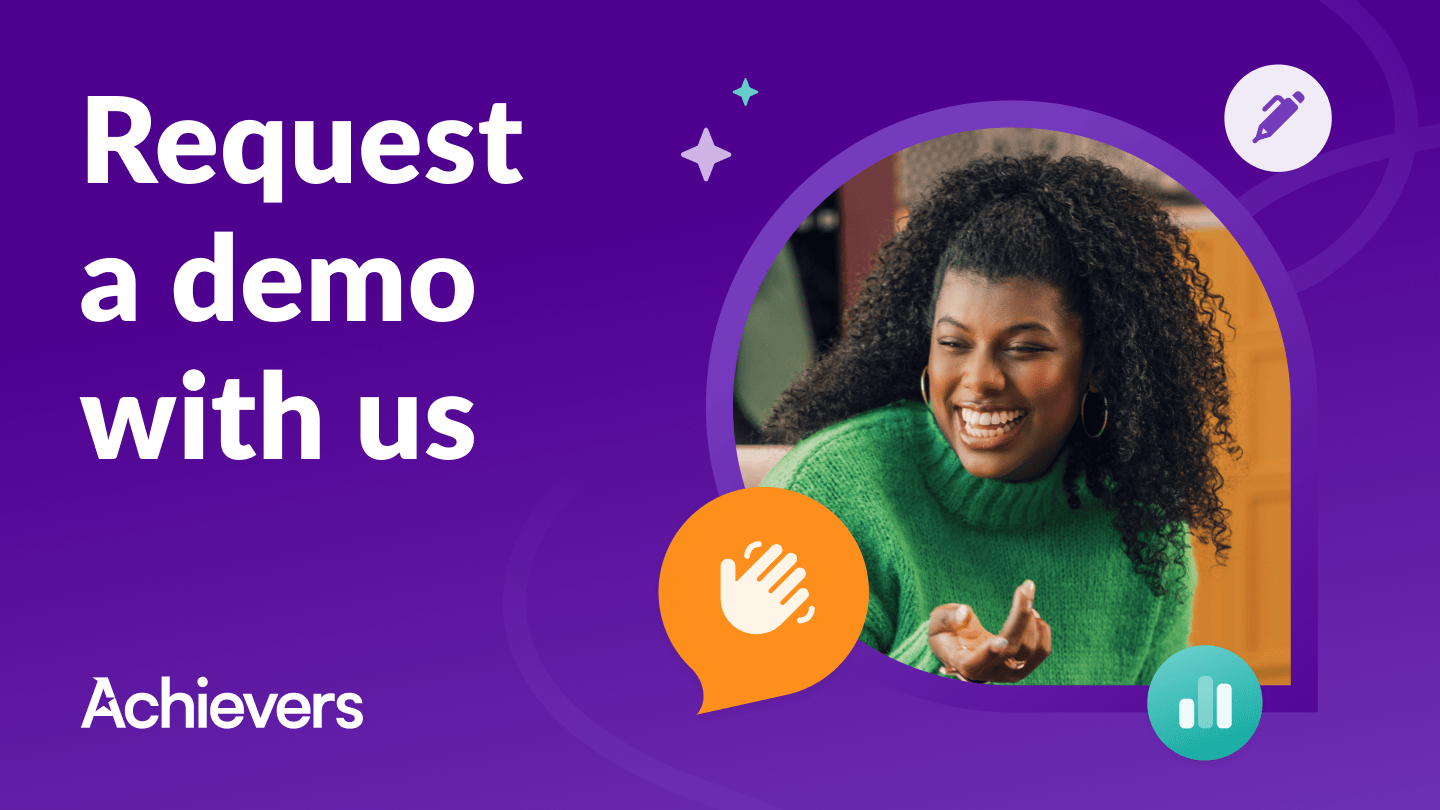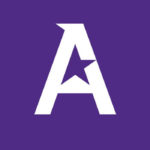Table of contents
If the past few years have reminded us of anything, it’s that change is constant and in order to keep up, organizations must continue to pivot. As 2024 takes shape, we expect to see a bit of a shake-up, with HR prioritizing key areas such as the employee-employee relationship, fostering trust during change, an unsettled talent market, defining workplace flexibility, and the pressures and opportunities of technology in the HR space. Here are our workforce predictions for 2024.
Turbulent times in employee relations
In 2024, HR leaders will have to address employee relations challenges that have been building over the course of 2023. Pandemic and post-pandemic workplace norms like remote or hybrid work are in flux, with many organizations mandating a return to the office which is impacting the employee experience.
As with any change, adoption and acceptance can take time. But in the interim, HR is faced with an internal PR challenge — addressing the sometimes rocky employee-employer relationship while trying to foster a positive employee experience during times of change and uncertainty.
That said, great opportunities to reimagine the workplace and the employee experience lay ahead of us. Here we’re capturing the insights, predictions, and perspectives of Hannah Yardley, Chief People and Culture Officer at Achievers. Here’s what we can expect:

The top workplace trends for 2024 will be:
- Workplace flexibility will be redefined
- Technology will drive the employee experience
- Having an integrated multi-generational workforce will become a DE&I focus
- Employee upskilling will be paramount for professional success
Trend #1: Workplace flexibility will flex with the times
Allow your organization the flexibility to stop being so flexible.
2024 is the year of recovery where we can step back to evaluate the lessons learned during the pandemic, the layoffs that followed, and the global unrest that we continue to experience in some form. It should be noted that we’ve moved from one stressful event to another and that it’s time to unpack all of that cumulative stress.
It’s difficult for employees to learn and retain information during times of stress, which impacts their performance and engagement. It can also be a detriment to their sense of belonging, which we know drives engagement. There’s an opportunity here to make employees feel known and welcomed by offering varied ways to help them destress. For instance, hiring a speaker on workplace wellness may work for some, while others will benefit more from recharge days.
It’s also about injecting moments of joy amidst changes like the re-evaluation around the return to the office. This will be a welcome change for some, but for others it’s a monumental shift. One way to offset the stress associated with changes like this is to leverage an employee recognition platform that adds small moments appreciation into an employee’s day, sparking feelings of joy that culminate in a better overall employee experience. More about that after we diver deeper into changes around flexibility in the workplace.
Defining workplace flexibility
Flexibility will move from being seen as a benefit to becoming part of standard operating procedures. It may seem counterintuitive to stop flexibility from being so flexible, however the sheer nature of having it fluctuate all the time means that it isn’t truly a benefit. Workplace flexibility needs to be clearly defined and put into practice so that employees know what to expect, and what is expected of them.
Flexibility in the new year will take different forms across organizations and can mean different things to each employee. In general, we are seeing an increased return to the office for employees who had worked remotely full-time for a few years, perhaps having moved to more of a hybrid model over the past year or so.
To reduce resistance to this operational change, consider engaging your employees now in discussions around changes to your flexible work policies. It encourages buy-in and makes employees feel seen and heard — important elements of belonging.
“At Achievers, we talk a lot about hybrid work personas and continue to look at the research behind how employees work best”, said Hannah. “We remain a strong proponent of workplace flexibility, but we’ve put new definitions around it because for us, we do some of our best work together in an in-person collaborative environment. For employees within a commutable distance, that means we get together on set days of the week to meet and work in-person and to enjoy the benefit of passive and active learning that comes from co-location.”
In addition to retention, clarity around workplace flexibility is also important from a talent attraction perspective. Candidates are savvy and will ask questions around these policies to gage whether or not the work environment will work for them. The interviews of today and tomorrow will be more of a conversation around the employee experience, expect the interviewer to become the interviewee.
Trend #2: The right technologies will create thriving workplace cultures
Technology isn’t new to the HR or employee experience (EX) space, but its place in the workplace continues to evolve. We’re seeing that employees have a bandwidth issue when it comes to learning and adopting new systems, and that sometimes the intended outcomes of technology adoption aren’t being realized. Here’s where we are heading in terms of HR tech next year.
Will technology threaten employee connections?
As technology takes a larger role within our workplace, it stands to reason that employee connections could be threatened. How do we ensure that automation does not jeopardize the human element of the workplace and all the benefits that feeling, and being connected, brings?
With so much going on in the workplace and the world around us, employees and people leaders have limited capacity to learn new systems and a reduced willingness to adopt them. What we’ve seen is that when technology enables processes, employees have a greater willingness to adopt technology. And so, organizations have to be careful to introduce technology only in spaces where they add value from the employees’ perspective, whether that’s in time saved, ease of use, or other process-enabling functions.
Our latest Achievers Workforce Institute Belonging Report tells us that tools and technologies can help us improve belonging in the workplace. So while also making our work lives easier, technology can be a driver for belonging, connecting us to one another and to the organization. One example is the always-on AI Chatbot. In organizations where it’s used correctly, employees are 33% more likely to feel a sense of belonging. These simple tactics can make all the difference in nurturing employee connections.
“We’re going to see the superpower of these technologies, enabling a sense of connection and belonging.”
Hannah Yardley, Chief People and Culture Officer at Achievers
While technology may be able to replicate our work, it remains to be seen if it will be able to replace the human element of what we do. Rather than avoid new tech altogether, find ways to embrace it. Leverage today’s technologies for their efficiency and ability to be the conduit for employee connections and belonging.
How will employee experience platforms fair in 2024?
Forrester believes that employee experience platforms will endure a turbulent 2024. At Achievers, we agree, and believe that they may actually prove to be prosperous as an employee experience solution.
Employee experience technology will continue to play a pivotal role in shaping the workplace experience but will shift from a HR ownership mindset to shared accountability. Managers will take the lead and own their employees’ experience by leveraging the capabilities of platform technology. This is great news for HR who has traditionally been the driving force behind platform technology usage.
This shift will be largely due to the gains made in manager effectiveness training and a renewed focus on the role people leaders have in bolstering the employee experience for their teams. Tech today enables this change, making it easy to take on these types of initiatives and measure their outcomes for the employee, manager, and the business. It’s a great way to marry the soft skills that managers need with the data-driven results they desire — and that the business requires of them.
From the employee perspective, the success of these platforms will be because of their integration into the flow of work. Employees today. are inundated with apps — between their personal and work-based applications, it can be overwhelming. They need to see value in the technology they’re being asked to utilize. By making tech like employee recognition software a part of their every day, and choosing a platform that’s simple to navigate, it becomes an easy (and fun) way for employees to embrace.
The winning tech will be the platforms that unite and satisfy the needs of both the employees and HR leaders. For instance, a recent Achievers Workforce Institute report tells us that employees are looking to find a way to connect with coworkers and when HR can support this need by providing tools to help them connect, employees are 25% more likely to feel a sense of belonging.
“That’s a great sweet spot”, said Hannah, “this idea that technology can satisfy multiple stakeholders in a business. This is particularly true with employee connection and belonging — a focus area I think we’ll see in 2024.”
Trend #3: Addressing ageism and recruitment blind spots
In addition to ongoing and important diversity, equity, and inclusion initiatives to support the professional growth of underrepresented groups in the workplace, ageism is once again coming to the forefront for 2024.
A recent HR Dive article highlights the need to challenge societal stereotypes about older workers emphasizing that older adults have valuable skills and experience often overlooked due to ageism and blind spots in hiring practices.
We’re seeing an ageing workforce that isn’t feeling welcome, known, or appreciated in the workplace. Just a few years ago, the primary challenge faced by this group was their adoption and understanding of emerging technologies. Today, employees are planning to stay in the workforce longer but are feeling pushed out, as company policies and employee retention programs focus on attracting and keeping their younger employees.
The new talent pool
For organizations to attract and retain seasoned talent who are nearing retirement, continuing to offer some degree of flexible work policies is important. Things like flexible work arrangements, contracts, and part-time work may be more appealing to those approaching retirement or considering post-retirement employment. This is an opportunity for organizations to lean into — rather than manage — more tenured employees and to differentiate themselves in the market.
It should be noted that having a multi-generational workforce has many benefits and that seasoned employees often bring a lot to the table. In particular, this group of workers tends to better understand the dynamics of working in an office and the benefits of collaboration — skills that are invaluable as we see a return to the office across many sectors. They can be great supporters to the next generation who may have attended school virtually or had their only workplace experience in a remote environment.
“Organizations should regard their older generation of workers as enablers of the new era of in-office collaboration as we see an increased return to the office.”
Hannah Yardley, Chief People and Culture Officer at Achievers
Career plateaus create more opportunities for multi-generational collaboration
As a rule, it’s best to avoid stereotyping employees in any way, including ageism. A trend for 2024 is age-agnostic hiring and retention practices. Traditional thought tells us that as an employee ages, they seek out more senior and leadership roles. Moving forward we’re seeing a shift, as more older employees opt for what are considered to be more junior roles, or ones with limited growth potential, simply because they desire flexibility in their work, enjoy the work they’re already doing, or see their job as just that — a job. Many within this group are no longer at a place where they aspire to forge a traditional career path.
Over the coming years, we’re likely to see multi-generations within every role level, not just within the workplace as a whole. It’s a great way for different generations to learn from one another and establish relationships that break stereotypical age boundaries.
As a byproduct of this, agnostic employee mentorship will also take place. Rather than simply looking to an employee that’s older than you, employees will be looking to leverage mentorship programs based on the stage of their career. This could be a transition to becoming a first-time leader, progressing through leadership levels, or even making a lateral move to another areas of the business. Pairing employees with mentors will be more about what the mentee is hoping to achieve, the next move they want to make, or how they want to grow within their existing role. It’s an interesting way to take an age-agnostic approach to mentorship and create connections and unexpected mentorship opportunities across an organization.
Flatter organizations mean fewer people leaders
With the onset of technology, we’ll see leaders skew more towards non-task-oriented activities, such as coaching and development. In essence, this makes an organization flatter because leaders can focus on the things that can’t be replicated by technology. An example of a task-orientation activity is assessing the completion of work functions during a 1:1 with an employee, which can be easily digitized.
In 2024, we’ll see a focus on activities that cannot be delegated to technology. This works well for flatter organizations in which fewer millennials are seeking out leadership positions. Because fewer leaders would be needed to complete task-oriented activities, you can have a successful workforce with more workers versus leaders.
Flexing between skills: The most sought-after skill set
In a hot talent market, the approach to hiring is shifting. Organizations will no longer seek out narrowly defined skill sets to fill specific roles. Instead, HR will be looking for flexible skills that bring a greater perspective to the role. This is the trend and direction that most innovative organizations are going. Being less rigid allows you to place employees in roles that lean into their varied interests, experience, and expertise, rather than restricting them to a singular function.
Organizations that adopt this dynamic mindset to hiring will also benefit from boomerang employees — those who choose to leave an organization, then opt to return a short time later. The sweet spot seems to be within the 8-9 month time period where employees leave, then question their change and decide to return to their previous employer.
Trend #4: Employee upskilling will be more dynamic
To keep employees engaged at work, employers should consider presenting them with opportunities to flex their creative and analytical minds in other areas of the business. One company already doing this successfully is Workday who introduced its gig program in 2019, a program that gives employees short-term assignments through its career hub platform. These opportunities offer employees valuable experience and a chance to explore other areas of the business, enhancing and expanding their skill set. It’s also a great way to keep employees who are feeling plateaued in their careers to become more engaged.
Circling back to the multi-generations in the workplace, the idea of having side hustle projects really resonates with the next generation workforce. It gives them a chance to upskill more quickly and try other roles to see where their interests truly lie.
It works well for the organization and teams that are looking to address business challenges without having to hire additional employees from outside of the organization. But it takes the support of leaders and managers to adopt and spearhead these projects in order for them to be successful, particularly because it requires the orchestration of employee resources across teams.
“At Achievers, this is something we’ve been unofficially test-driving for some time”, said Hannah. “When employees had the opportunity to try a new role within the organization, a large number of them found their next job in those areas.” It’s a great retention tactic and story to tell as part of your employer brand. The gig program approach gives us an opportunity to disassociate skills from jobs. It’s about the skills that an employee brings, not the job they’re doing.
Next year, we will see HR leaders enabling and combining collaboration with flexible work. While this is something that in the past felt at odds with one another, HR leaders have become pros at helping employees in-office and those working on the frontlines or at home to connect and collaborate. Now, with organizations settling into their post-pandemic norms which include a new mix of work environments, HR is poised to take the lead in facilitating the future of the workplace. It’s HR’s role to unite these two programs that seem juxtaposed to one another, but in reality, can fit seamlessly and work for both the employees and the organization.
Key takeaways for 2024
- You won’t be the only organization re-evaluating and redefining flexible work. Feel empowered to make decisions that work best for the business, while also finding ways to bring employees into the decision-making process where possible, and by fostering a culture of belonging through rewards and recognition.
- Take a step back to look at workplace technologies differently. Invest only in what works within the flow of work you and your teams need to be successful. Look for creative ways to share or leverage 2024 budgets to create a more fulfilling employee experience.
- Embrace a multi-generational workforce by optimizing the opportunities to integrate generations across functions, departments, and levels. It’s also a good time to examine your hiring and retention practices for bias to ensure that you’re not missing out on the many benefits of a more seasoned employee group.
- Don’t make assumptions about your workforces’ capabilities based on their defined roles. Look for creative ways to offer employee upskilling and solve business challenges, such as offering employees the opportunity to work a ‘gig’ job in other areas of the business.
To learn more about how to prepare your organization and its employees for change, schedule a chat with an Achievers employee experience expert.






